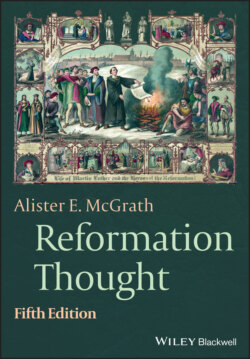Читать книгу Reformation Thought - Alister E. McGrath - Страница 21
A Failed Attempt to Reform: Conciliarism
ОглавлениеBut who could reform the church? It was not a new question. Many medieval thinkers, frustrated at the apparent inability of the papacy to initiate a process of review and reform of the church, urged secular rulers to convene a reforming council and force reform upon an institution which seemed unwilling to reform itself. Leading advocates of this approach, often known as “Conciliarism,” included Pierre d’Ailly and Jean Gerson. The matter seemed to have been resolved at the Council of Constance (1414–18), which declared that only a General Council had the necessary authority to reform the church. However, in the end, this attempt to reform the church became mired in procedural wrangling, and power reverted to the papacy.
Important through these developments were, they do not adequately explain the rise of Protestantism. The root and branch reform demanded by so many in the later Middle Ages could easily have taken the form of an internal review of the church’s teachings and practices, not unlike the great Gregorian reforms of the eleventh century. What really needs to be explained is why and how a group of movements working for renewal and reform within the church at the opening of the sixteenth century solidified as an entity outside the church structures of its day, and somehow managed to survive.
